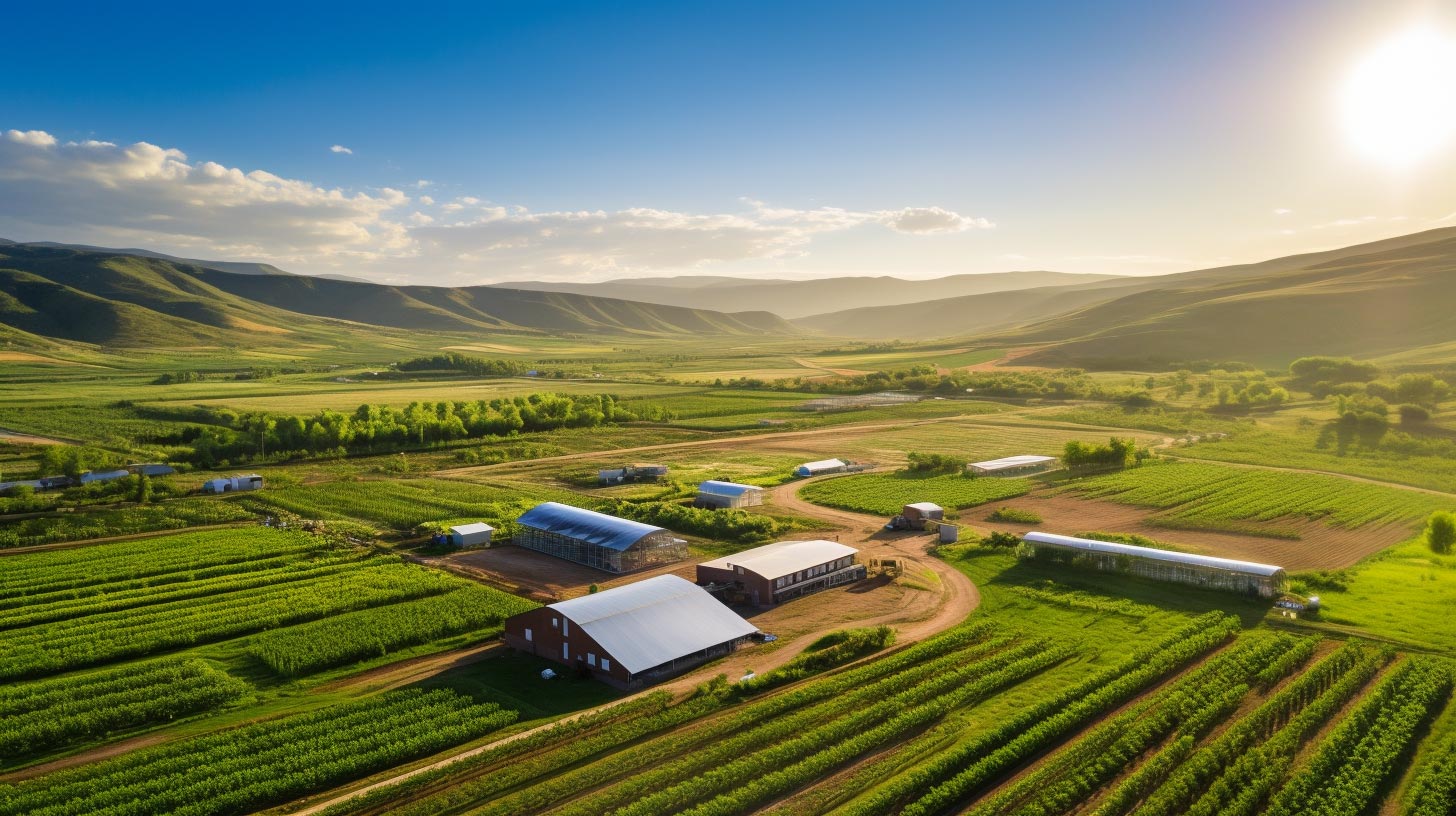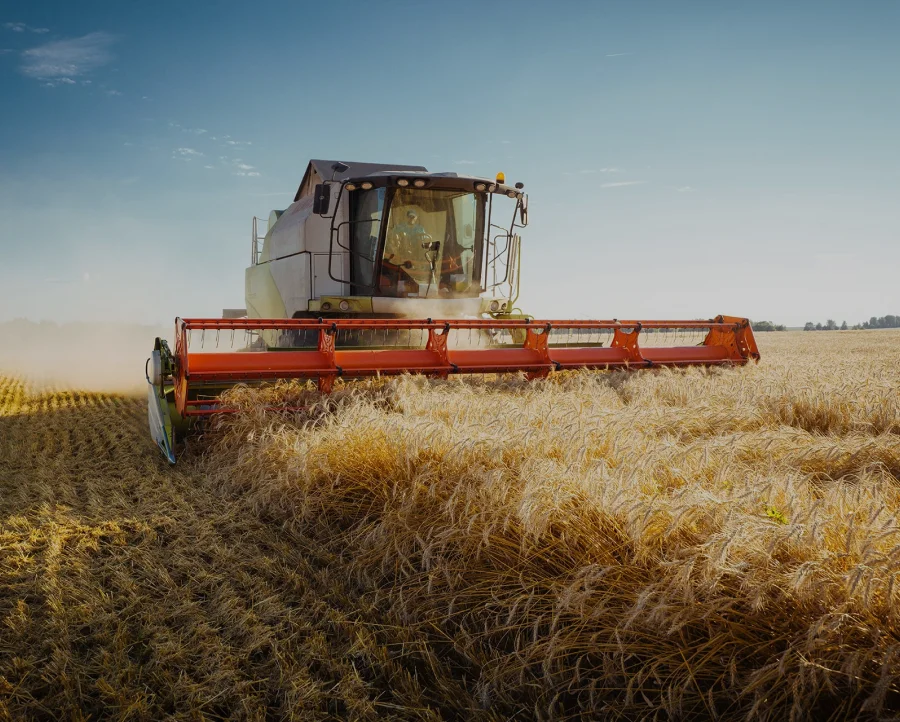In the heart of California’s fertile valleys lies an industry that not only symbolizes agricultural excellence but also faces a myriad of supply chain challenges – almond growing. Almonds, often referred to as “nature’s powerhouse,” have witnessed a surge in demand due to their nutritional benefits and versatile applications in the food industry. Behind this booming industry, however, lies a complex web of challenges in agriculture supply chain management. In this article, we delve into the intricacies of managing the supply chain for almond growers and explore solutions to ensure a smooth and efficient process.
Importance of a Smooth Agriculture Supply Chain for Almond Growers
Before we delve into the specific challenges and their solutions, it’s crucial to understand why a well-functioning supply chain is paramount for almond growers. The agricultural supply chain, often taken for granted, plays a pivotal role in the success of any farming endeavor, including almond cultivation.
A streamlined supply chain ensures:
- Quality Preservation: It helps maintain the quality of almonds from the orchard to the consumer’s table, crucial for ensuring customer satisfaction and trust in the product.
- Cost Efficiency: Efficient supply chains reduce operational costs, which is vital in an industry where profit margins can be thin.
- Timely Deliveries: Prompt delivery of almonds to distributors, retailers, and processors is essential to meet market demand and maintain competitiveness.
- Sustainability: A sustainable supply chain reduces waste and environmental impact, aligning with the increasing consumer preference for eco-friendly products.
Now, let’s explore the top challenges faced by almond growers in managing their supply chains and the strategies to overcome them.
Supply Chain Challenges for Almond Growers
Seasonal Fluctuations and Demand Variability:
Almond production is highly seasonal, with the harvest occurring once a year. This seasonality can result in significant fluctuations in supply and demand throughout the year.
To address this challenge, almond growers can employ demand forecasting and inventory management tools. Predictive analytics can help anticipate market demand, enabling growers to adjust production and distribution schedules accordingly. Additionally, diversifying product offerings, such as almond-based snacks or beverages, can help offset the impact of seasonality.
Inventory Management and Storage
Almonds are a perishable commodity, and improper inventory management and storage can lead to spoilage and financial losses.
Implementing efficient inventory management systems and investing in proper storage facilities, including temperature-controlled warehouses, can extend the shelf life of almonds. Regular inventory audits and rotation strategies are essential to ensure older stock is sold first, reducing the risk of spoilage.
Traceability and Transparency
Consumers increasingly demand transparency regarding the origin and quality of their food. Traceability can be challenging in the agriculture supply chain due to the involvement of multiple stakeholders.
Almond growers can leverage technology, such as blockchain and QR codes, to provide end-to-end traceability. This not only enhances consumer trust but also facilitates quick recalls in case of quality issues. Collaboration with industry associations and regulators to establish standardized traceability protocols is also essential.
Transportation and Logistics
Almonds often need to travel long distances from the orchard to the end consumer, making transportation and logistics a critical aspect of the supply chain.
Optimizing transportation routes, consolidating shipments, and using efficient packaging can reduce transportation costs and minimize the environmental footprint. Collaborating with logistics partners experienced in handling agricultural products can ensure timely and safe deliveries.
Supply Chain Collaboration
The almond supply chain involves numerous stakeholders, from growers to processors, distributors, and retailers. Effective collaboration among these parties is essential but often challenging to achieve.
Implementing an integrated supply chain management system that connects all stakeholders can enhance communication and collaboration. Such systems, often integrated into Agriculture ERP (Enterprise Resource Planning) solutions, enable real-time data sharing and coordination.
How does AgriERP aid in Agriculture Supply Chain Management?

AgriERP plays a pivotal role in modernizing and streamlining agriculture supply chain management. These comprehensive software solutions offer a wide range of functionalities and benefits that significantly improve efficiency, transparency, and decision-making in the agricultural supply chain. Here’s how AgriERP helps in agriculture supply chain management:
-
End-to-End Visibility:
AgriERP provides real-time visibility into the entire supply chain, from seed planting to product delivery. This visibility allows stakeholders to track the movement and status of agricultural products at every stage, ensuring better control and informed decision-making.
-
Inventory Management:
AgriERP helps in efficient inventory management by tracking stock levels, expiration dates, and product quality. This prevents overstocking or understocking issues and reduces the risk of spoilage or wastage.
-
Demand Forecasting:
Advanced analytics and historical data analysis within AgriERP assist in predicting market demand accurately. This enables growers to plan production cycles, optimize planting schedules, and adjust inventory levels accordingly.
-
Traceability and Quality Control:
AgriERP incorporates traceability features, often utilizing technologies like blockchain or RFID (Radio-Frequency Identification), to ensure transparency in the supply chain. This helps in tracking the origin, quality, and safety of agricultural products, meeting consumer demands for product information.
-
Supplier Management:
Effective management of suppliers and vendors is crucial in agriculture supply chain management. AgriERP allows for the monitoring and evaluation of supplier performance, ensuring timely and high-quality inputs for production.
-
Financial Management:
AgriERP includes financial modules that help growers manage costs, invoices, and financial transactions efficiently. This supports accurate cost analysis and budgeting, improving the financial health of agricultural businesses.
-
Logistics and Transportation Optimization:
AgriERP assists in optimizing transportation routes, reducing transit times, and minimizing transportation costs. It also helps in coordinating logistics activities such as scheduling and vehicle tracking.
-
Compliance and Regulatory Support:
Agricultural supply chains are subject to numerous regulations and standards. AgriERP can assist in ensuring compliance with these regulations by providing documentation, reporting, and audit trails.
-
Collaboration and Communication:
Effective communication and collaboration among supply chain stakeholders are essential. AgriERP facilitates seamless information sharing between growers, processors, distributors, and retailers through a centralized platform, reducing errors and delays.
-
Data Analytics and Insights:
AgriERP collects and analyzes data from various points in the supply chain, providing valuable insights. This data-driven decision-making helps in identifying trends, optimizing processes, and improving overall efficiency.
-
Sustainability and Environmental Impact:
It helps growers monitor and reduce their environmental footprint by tracking resource usage, such as water and energy. This aligns with sustainability goals and consumer preferences.
-
Customization and Scalability:
AgriERP systems are often customizable to meet the specific needs of different agricultural operations. They can also scale as the business grows, accommodating increased complexity and volume.
AgriERP is a powerful tool that enhances agriculture supply chain management by providing end-to-end visibility, optimizing processes, ensuring compliance, and enabling data-driven decision-making. In an industry where efficiency, quality, and sustainability are paramount, AgriERP systems are essential for modern agricultural businesses looking to thrive in today’s competitive landscape.
Conclusion: Navigating Agriculture Supply Chain Challenges in Almond Growing
In conclusion, the success of almond growers depends on their ability to navigate the intricate web of challenges in agriculture supply chain management. Seasonal fluctuations, inventory management, traceability, transportation, and collaboration all present formidable obstacles, but with the right strategies and technologies, these challenges can be turned into opportunities for growth and sustainability.
As we move forward, the adoption of robust financial modules within Agriculture ERP systems becomes crucial. These modules can streamline financial processes, automate invoicing, and provide insights into cost structures, enabling almond growers to make informed decisions for their businesses. In an industry where every almond counts, the integration of financial modules into Agriculture ERP systems is not just a luxury but a necessity for long-term success.
In essence, almond growers must embrace technology, foster collaboration, and prioritize supply chain efficiency to ensure that their almonds continue to reach consumers’ tables, meeting the demand for this beloved superfood while ensuring profitability and sustainability. The challenges are indeed significant, but the solutions are within reach, empowering almond growers to thrive in the ever-evolving landscape of agriculture supply chain management.








